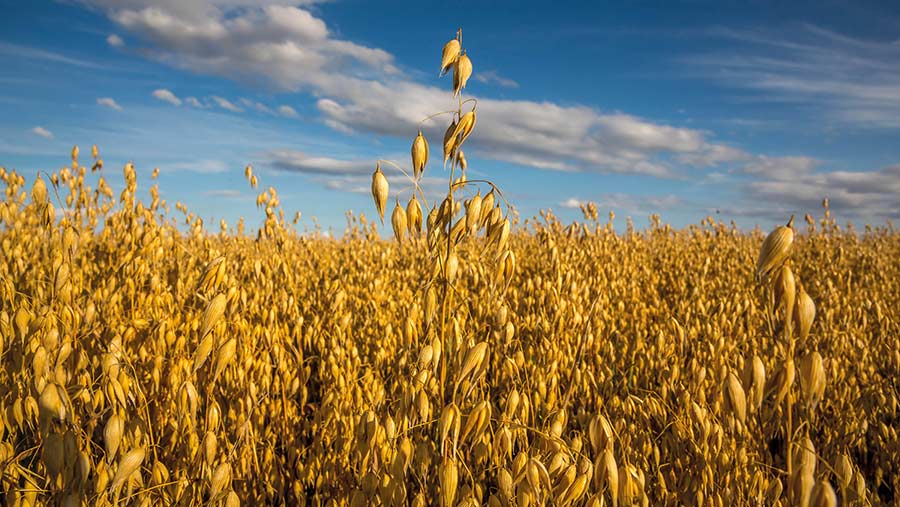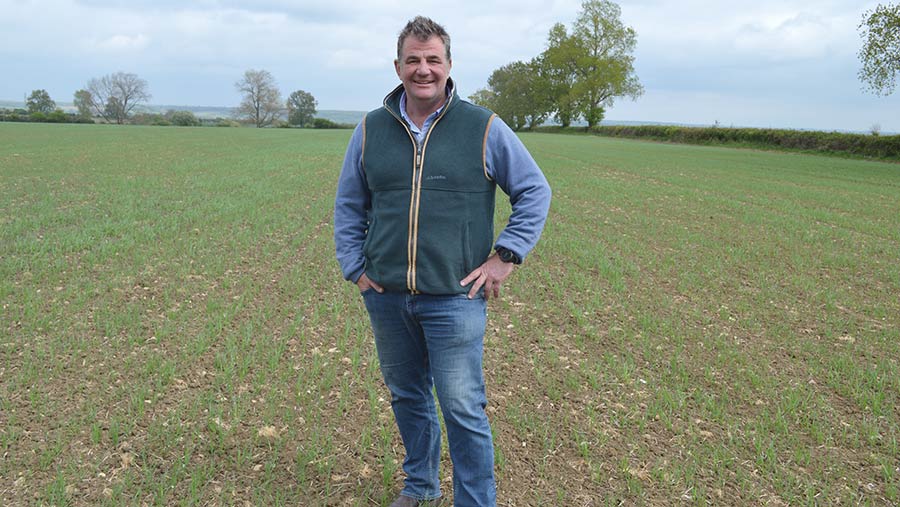Oat growers to gain from opening of new processing plant
 © Tim Scrivener
© Tim Scrivener Europe’s newest and most efficient oat processing plant is set to open in Northamptonshire next year, creating a new outlet for oat growers to feed a rapidly expanding market.
The site will have the potential to process 280,000 tonnes of oats a year, drawing in grain from across central England, and could attract growers looking for a low-input cereal with less need for expensive nitrogen fertiliser.
The plant is being built alongside an existing Camgrain store between Kettering and Corby in the heart of oat growing territory and will tap into a growing demand for oats in the UK and globally.
See also: Oat growers turn to expanding plant-based drinks market
Simon Willis, chief executive officer of the grain co-operative, says the plant is looking to add value for its members by turning grain into a food ingredient to be sold to a number of eager buyers when the plant opens in May 2023.
“There is a growing demand for oats for a number of products, especially in health foods and non-dairy drinks,” he tells Farmers Weekly.
Grower interest
The oat plant will likely be of interest to local growers such as Camgrain member and farmer Charlie Reynolds who is growing spring oats as the best spring-sown option to control blackgrass on his heavy clay land.
He farms only three miles east of the new plant and might look to increase his 45ha of the spring variety Isabel if the profit margin is favourable as he looks to earn a premium on everything he grows.
The £45m plant is being built by three joint venture partners – Camgrain, grain trading and agronomy group Frontier, and food and drink ingredients group Anglia Malting (Holdings) – and is known as Navara Oat Milling.
Frontier will supply all the oats for the plant while AMH, which owns European maltster Crisp Malt and a food ingredient division, will lend its expertise in the ingredients area.
Mr Willis says the idea for the plant came three years ago with the co-operative looking to get good value for its members for a gluten-free grain, while it needed to be of a scale to compete in the world market.
“When looking at the project we realised that in order to compete in the global market we needed scale and a guaranteed supply to offer our end-users,” he says.
50-mile radius sourcing
The site was chosen as the Camgrain store closest to oat growers rather than its two stores in Cambridgeshire – Balsham and Linton – and one store in Stratford-upon-Avon, and it is hoped the majority of grain will be sourced in a radius of 50 miles from the plant.
Camgrain has the largest network of farmer-owned grain stores for its 550 farmer members and can store more than 500,000 tonnes of grain.
This new move will give provenance for the oats it will process and the group will only deal directly with growers, rather than trade in second-hand oats. The new business will also look to offer contracts for its growers.
The group will take any variety of winter or spring oats at a minimum specific weight of 52kg/hl, offering a substantial premium over feed oats, while favoured winter variety Mascani is likely to attract the best premiums.
The plant will look to de-hull the oats by removing the husk and then stabilise the resultant oat grout to prevent it deteriorating. It can then supply the grout in a number of forms such as flour, flakes or rolled.
The market for oats is growing due to it being gluten-free and regarded as a “super food”, its use in breakfast cereals and the booming non-dairy drinks sector.
Leading players
In this oat drinks sector, the two leading players are Oatly and Alpro.
The first is a Swedish vegan group which has announced plans to open a new drinks plant in Peterborough in 2023 which will have an annual capacity to make 300m litres of oat drink, with a scope to push up to 450m litres and create at least 200 jobs.
The fast-growing Malmo-based company, which owns the world’s biggest oat drinks brand, sees the UK market as an important driver for its growth, and Britain with its maritime climate is an excellent place to source its oats.
The second player is Alpro, owned by the world’s largest yoghurt maker, the Paris-based Danone group, which has operated a UK plant at Burton Latimer on the edge of Kettering since 2000.
It announced in November last year a £41m investment to produce up to 300m litres of plant-based drinks a year, including soya, oat, coconut and rice.
Best spring-sown crop
Northamptonshire grower Charlie Reynolds says oats are the best spring-sown crop to control blackgrass on his heavy land and are cheaper to grow than feed spring barley.
His family farm has been growing oats on and off for 30 years and his spring crops average 6-7t/ha over the medium term, while yields were as high as 8.5t/ha three years ago.
“Oats do well for us and if they continue to do well we might push up the area, but any decision will be margin driven,” he says.
His family farms 400ha of mainly arable heavy clay land at Geddington Farms, with 40-45% of cropping in first wheats. Other crops include winter barley, oilseed rape, winter beans and winter linseed.
“Blackgrass is still a big concern for us, so spring crops help the control, and oats are the best spring option as they get up out of the ground quickly in the spring,” he says.

Charlie Reynolds © MAG/David Jones
Useful break crop
He sees oats as a useful break crop which gives a good entry for winter wheat and come to harvest after winter barley and oilseed rape and before winter wheat.
He looks to apply 100kg/ha of nitrogen fertiliser whereas feed spring barley would get 140-145kg/ha. Oats usually receive two herbicides, two fungicides and plant growth regulators, but these products are generally cheaper then those used on barley.
Spring oats have a slightly better margin than winter beans although the beans have a particular advantage in the rotation as they are also an excellent entry for winter wheat and the leguminous crop leaves nitrogen in the soil for the wheat.
“The crop is cheap to grow and is less demanding at harvest time compared to milling wheats and malting barley which need to be cut as soon as they are ready, whereas oats can wait a few days,” he says.
